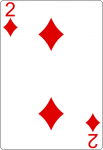
Diamonds: a set of pieces in 4: See the Year of Ballet Playing Cards information page
- D2-Ünneplö (Celebration or “Festive”) by Mark Rózsavölgyi) – click to download the file (pdf)
 At the end of the previous post, I said I regretted not transcribing Mark Rózsavölgyi‘s “Festive,” which I discovered right at the last moment, while I was trying to find out who wrote the tune that Liszt borrowed for his Hungarian Rhapsody No. 6. The music has haunted me literally for the whole week since, morning, noon and night, and so I have transcribed it for week 2 of the Year of Ballet Playing Cards.
At the end of the previous post, I said I regretted not transcribing Mark Rózsavölgyi‘s “Festive,” which I discovered right at the last moment, while I was trying to find out who wrote the tune that Liszt borrowed for his Hungarian Rhapsody No. 6. The music has haunted me literally for the whole week since, morning, noon and night, and so I have transcribed it for week 2 of the Year of Ballet Playing Cards.
I’ve transcribed it because I fell in love with the music at first hearing, but also because it happens to be very useful for all kinds of things in ballet class: that kind of slow, juicy, stretchy tendu exercise where nothing seems to be quite slow enough; a fondu that has been set on a very slow habañera/tango; an adage.
What to play for a slow, warm-up tendu? Try a csárdás for a change
I default to jazz standards for this, or a slow tango/habañera type, but always wish I had a few other things in reserve. Those styles will do, but they require some fixing and a lot of control to keep them in the right tempo area, the styles aren’t to every teacher’s taste. What’s great about this piece is that it’s really slow, but there’s a kind of cat’s cradle of notes between the beats that keep a rhythmic tension going, and keep a sense of beat for both you and the dancers.

One of the hardest things to do is to play very slowly without any intermediate beats, but this plays itself. Slow exercises often have little bits of detail in them that need an occasional fine-tuning of the beat, so music like this which has several levels of metre at once is the equivalent of making sure you’ve got plenty of change for the parking meter (no pun intended) as well as a bundle of notes for your larger purchases.
A juicy csárdás by any other name…
The term that comes instantly to mind for this music is “Juicy csárdás.” I don’t think it is really a csárdás, but I’m just calling it that as a placeholder for something slow and Hungarian. Why juicy? Not sure, but I think it’s because you sort of squeeze the notes out between the beats, you can almost feel a productive tension as you play, as if you’re playing the accordion. I couldn’t think of a tempo/expression word to put at the beginning, but when I played it for class yesterday, the teacher smiled and said, “I like that – moodily East European” and that summed it up. I won’t risk offending moody East Europeans by putting it on the score, but it just goes to show how easily music conveys culturally sedimented meanings. For more on that, see Marina Frolova-Walker’s wonderful article on why we think all Russian music is sad .
Only when I’d nearly finished did I realise that I should have notated it in 4/8 so that you could see the longer lines, and how beats belong together. The image at the top of this post will give you the idea. Unfortunately, I didn’t have time to redo the whole thing (I know there’s a plug-in in Sibelius for this, but it doesn’t copy anything except notes and articulations, so it would have taken ages to edit).
See also
- For more on Hungarian music, see previous post, but especially Hungarian dances by Rózsavölgyi from IMSLP.
- More on Verbunkos style – which this is
References
Tari, L. (2012). The Verbunkos, a music genre and musical symbol of Hungary. Bulletin of the Transilvania University of Braşov, 5(54), 81–86.

